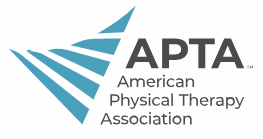APTA Annual Conference Abstracts
APTA NEXT 2016 Conference, June 8 - 11, 2016
What's Your Best Estimate? A Comparison of Accuracy of Visual Estimation of Joint Angle Between DPT Students and Experienced Physical Therapists.
Untitled
1005
WHAT'S YOUR BEST ESTIMATE? A COMPARISON OF ACCURACY OF VISUAL ESTIMATION OF JOINT ANGLE BETWEEN DPT STUDENTS AND EXPERIENCED PHYSICAL THERAPISTS.
Shannon Gallagher*, Natalie Jennings, Alexandria Ludwig, Jennifer A. Mai
PURPOSE: The purpose of this study is to (1) determine if a difference exists between visual estimation of joint angle between DPT students and experienced physical therapists and (2) determine if the estimation is an acceptable measurement to be utilized in the clinic.
BACKGROUNDS/SIGNIFICANCE: Infection control across health care settings is an important consideration for physical therapists. Hospital-acquired infections (HAI) can increase costs, lengths of stay, risks of complication, and the potential for death.1 In a hospital setting, physical therapists sometimes treat bedside and unknowingly carry potential harmful bacteria from one patient to the next due to sharing equipment such as gait belts, walkers, and goniometers.2 As a greater emphasis has been placed on prevention of HAI, physical therapists are now more aware of the need to sanitize equipment between patients. Some measures such as assigning gait belts and walkers to each patient's room have helped to reduce this risk of hospital acquired infections. Currently some practitioners may not have access to goniometers bedside unless they bring the tools with them to the physical therapy session. If physical therapists carry the goniometer with them for multiple treatments, this may lead to a greater risk of transmission of infection between patients. One potential alternative for reducing risk of HAI would be to visually estimate range of motion in patients. Aside from infection control issues, other considerations in the acute care setting that may lead to physical therapists estimating range of motion in patients may include physiological changes during the session, productivity, and the inability for the patient to achieve optimal positioning.
Multiple studies have supported the use of goniometers for reliable measurement of the joint range of motion.3-6 A study by Blonna et al7 evaluated visual estimation used routinely by an orthopedic surgeon to assess elbow joint range of motion prior to measuring with a goniometer for comparison. Results of the study showed that the experienced surgeon was able to visually estimate within 5 degrees of the standard goniometer 92% of the time. Experience was a key finding in accuracy. Jensen and colleagues8 identified that expert practitioners utilize information gained in practice for application with patients over academic knowledge. Placing this information in the context of the current study, students would have little practical experience with authentic patients and may not be able to estimate joint angle at the same level of accuracy.
SUBJECTS: A sample of convenience was used for this study. To be included in the study, experienced therapists had 5 or more years of clinical experience as a physical therapist and currently practicing. Student physical therapists were currently enrolled in the first or second year of an accredited DPT program located in the midwest. Exclusion criteria for both groups included uncorrected visual impairments such as blindness. A total of 54 subjects volunteered to participated; 6 did not meet inclusion criteria leaving 24 Year 1 DPT students, 8 Year 2 DPT students, and 16 experienced physical therapists.
METHODS AND MATERIALS: All subjects signed an informed consent. Student groups were recruited prior to completion of a final exam in the spring semester. Following the exam, on a volunteer basis, students entered another room where the examiners were located. Experienced physical therapists were recruited at a community research night hosted by the DPT program. Three photos previously analyzed on Dartfish software for correct joint angle measurement were placed on a table in the front of the room. Each subject was given a piece of paper with a random number on it. Subjects recorded basic demographics on a provided document with the corresponding number. He/she the observed the joint position in each photo and estimated the joint angle measurement through only visual input. Subjects individually, without discussion recorded this measurement on the numbered piece of paper issued by the experimenter. This paper was turned in to a covered box, later to be recorded by the primary investigator. This project received IRB approval.
ANALYSES: An independent t-test was used to compare estimates of joint angle by students versus experienced clinicians for each joint measured. A one sample t-test was completed to compare group means (novice vs. experienced) for each joint estimation to the true measurement (as determined through Dartfish).
RESULTS: Experienced clinicians were significantly better at estimating the joint angle at the elbow (p=0.001) and knee joints (p=0.004) compared to students. Year 1 DPT students displayed a significant difference in estimated scores compared to the true scores for both elbow and knee joints. No significant differences were found comparing Year 2 DPT students to the true score or experienced clinicians to the true score. Inconsistencies with the true score were less in experienced clinicians compared to novice students. The average experienced clinician score was less than 5 degrees from the true measurement supporting accuracy of the estimation.
CONCLUSIONS: Experienced clinicians are better than students at estimating joint angle scores, with the average estimated score within 5 degrees of the true score. This is within previously accepted ranges of intrarater (4-5 degrees) and interrater reliability (7-9 degrees). The researchers recommend that estimates are acknowledged through documentation as to not be confused with actual goniometric measurements. Estimation of joint angle is a viable alternative for assessment by experienced clinicians when gold standard tools are not present at session or when attempting to minimize HAI.
FUNDING SOURCE: None.
REFERENCES (at least five within ten years): 1. Warye K, Granato J. Target: zero hospital acquired infections. Healthc Financ Manage. 2009;63:86-91.
2. Levenhagen KM. Community-acquired methicillin-resistant Staphylococcus aureus: an emerging concern for physical therapists: discussion. Physiother Res Int. 2008;13:9-17.
3.Ellis B, Bruton A. A study to compare the reliability of composite finger flexion with goniometry for measurement of range of motion in the hand. Clini Rehabil. 2002;16: 562-570.
4.Hanney WJ, Kolber MJ, Marshall JS. The reliability of clinical measurements designed to quantify shoulder mobility. Phys Ther Rev. 2011;16;6:413-422.
5. Jakobsen TL, Christensen M, Christensen SS, Olsen M, Bandholm T. Reliability of knee joint range of motion and circumference measurements after total knee arthroplasty: Does tester experience matter? Physiother Res Int. 2010;15:126-134.
6. Watkins M, Riddle D, Lamb R, Personius W. Reliability of goniometric measurements and visual estimates of the knee range of motion obtained in a clinical setting. Phys Ther. 1991; 71: 90-96.
7. Blonna D, Zarkadas PC, Fitzsimmons JS, O'Driscoll SW. Accuracy and inter-observer reliability of visual estimation compared to clinical goniometry of the elbow. Knee Surg Sports Traumatol Arthrosc. 2012;20:1378-1385.
8. Jensen GM, Gwyer J, Shepard KF, Hack LM. Expert practice in physical therapy. Phys Ther. 2000;80:28-43.
KEYWORDS: Visual estimation, range of motion, prevention of hospital-acquired infections
*First author



